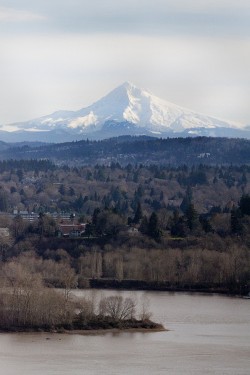Major earthquakes over the last several years have made headlines and captured everyone’s attention. According to the United States Geological Survey, the Haitian earthquake in 2010 killed over 200,000 people and left over a million homeless. Several months later, an 8.8 magnitude quake struck Chile and caused the equivalent of 30 billion U.S. dollars in damage. More recently, Japan experienced a tragedy that is still being tallied. Could something like this happen in the Pacific Northwest?
Megathrust earthquakes in the Pacific Northwest
Major earthquakes over the last several years have made headlines and captured everyone’s attention. According to the United States Geological Survey, the Haitian earthquake in 2010 killed over 200,000 people and left over a million homeless. Several months later, an 8.8 magnitude quake struck Chile and caused the equivalent of 30 billion U.S. dollars in damage. More recently, Japan experienced a tragedy that is still being tallied. Could something like this happen in the Pacific Northwest?

The answer to that question is contingent on understanding the concept of plate tectonics. The surface of the earth is composed of 12 large plates and several smaller ones. According to Portland State geology professor Dr. Scott Burns, the North American plate—which includes Oregon and Washington—is moving west at a rate of about four centimeters a year. At the same time, the Juan de Fuca plate, just off the coast, is moving east at the same rate. “About the same rate as fingernail growth,” Burns said.
This plate movement is driven by seafloor spreading. According to Burns, a volcanic ridge in the ocean floor–about 200 miles off the coast–generates new oceanic crust, which pushes outwards towards the continents surrounding the Pacific Ocean. The movement generates earthquakes, volcanic activity and tsunamis in this area, which is commonly referred to as the Ring of Fire.
When oceanic and continental plates collide, the denser, water saturated oceanic plate dives underneath the continental plate, and in doing so, gets closer to the hot interior of the earth. The tremendous heat turns the waater into steam, which rises through the earth above melting solid rock to create lava. Burns said this forms volcanic chains.
Volcanic features like these are easily visible (on a clear day) from many Portland doorsteps: Mount Hood, Mount St. Helens, the Cascades. Portland is in the midst of what is called the Cascadia subduction zone. It extends from British Columbia to northern California. The oceanic Juan de Fuca plate is being forced under the continental North American plate. According to Burns, while these plates are still moving, the plates become “locked” together deep beneath the earth and pressure builds causing an uplift of the land. When the pressure is released, tremendous energy is generated and a very large megathrust earthquake occurs, followed by a tsunami along the coast.
According to Burns, Portland could experience one of three different types of earthquakes. Fault lines running through the North American plate could produce magnitude 6.5 quakes. The entire margin, from British Columbia to Northern California, could rupture, generating a megathrust quake of a magnitude 9 or greater. Or, a smaller break could occur along the Northern California margin, which would produce a magnitude 8 or greater in Portland.
The big question looms however. When will this happen? There is no way to predict earthquakes. The technology doesn’t exist yet. However, Burns explained that Chris Goldfinger, geology and geophysics professor at Oregon State University, has done research using turbidite deposits along the ocean floor to determine how many of these large earthquakes have occurred. Turbidite deposits are left when violent shaking creates turbulence in the water. Subsequent deposits are obviously different when compared to normal deposits of sediment along the ocean floor. Based on Goldfinger’s research, there have been 41 of these megathrust earthquakes over the last 10,000 years.
According to Burns, this research has led the scientific community to believe that a rupture along the entire margin can occur every 500 to 600 years. He said there is a 15 percent chance of an earthquake like this happening some time in the next 50 years. A large earthquake at the southern edge of the margin occurs every 200 to 300 years and he said there is a 37 percent chance of one occurring some time in the next 50 years.
As it turns out, not only can megathrust earthquakes happen here, they have happened, numerous times. Based on the historical evidence, it will happen again, and many believe this will be sooner than most would like to think. The last quake occurred 311 years ago and, according to Yumei Wang, geotechnical engineer and head of the Geohazards team for the Oregon Department of Geology and Mineral Industries, this region is “nine months pregnant and overdue.”




